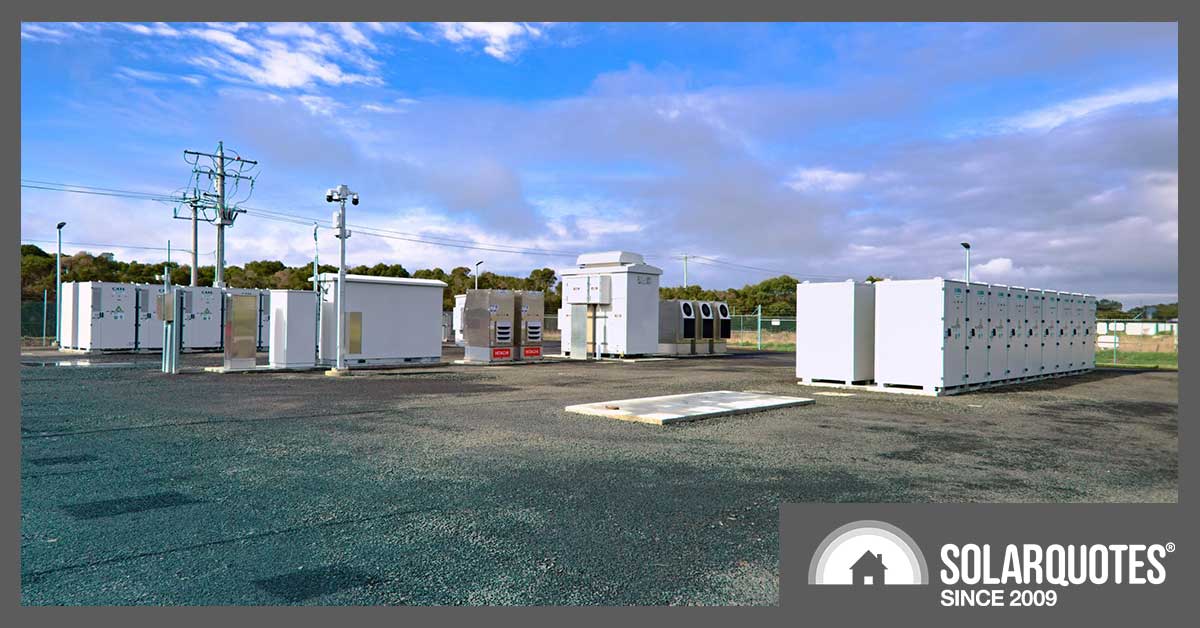
A few months later than originally expected, Ausnet Services’ $10 million Phillip Island battery was formally opened over the weekend by Victoria’s energy and resources minister Lily D’Ambrosio.
The Phillip Island Community Energy Storage System (PICESS) will be maintained and monitored by Ausnet subsidiary Mondo.
The lithium-iron phosphate battery replaces the diesel generators which had formerly provided grid backup and power for the MotoGP motorcycle race. The battery has a peak charge/discharge power of 5 megawatts (MW) and can store 10 megawatt hours (MWh) of energy.
In terms that are a bit more digestible, the energy stored in a 10 MWh battery equals 10,000 kilowatt hours (kWh). To put this into context, consider a home in Cowes, the biggest town on Philip Island. This home, housing about 2 to 3 people and using electric heating, consumes around 16.4 kilowatt-hours of electricity from the Victorian grid every day. If we use our 10 MWh battery exclusively for these homes, it could theoretically provide all the stored energy for 609 of them over 24 hours.
However, in practical terms, this is not exactly how this large battery will be deployed. Its principal role will be to provide stability to the electrical grid. It’s designed to charge or discharge over short periods of time as required, aiding the grid during instances of peak demand or when supply is low.
It will be particularly useful during the peak tourist season according to Mondo:
“Over the busy summer period Phillip Island’s population more than quadruples, causing a significant strain on the local electricity network and at times, leads to power dropping out. The PICESS, has been built to provide relief for the network and the local Phillip Island community over this peak period.”
TEC-C, which built the battery for Ausnet, said on LinkedIn it used Hitachi batteries.
In a weekend media release, D’Ambrosio said
“Neighbourhood batteries are helping Victorians be part of the renewable energy revolution by storing cheap renewable power from rooftop solar during the day and deploying it when it is needed most.”
The battery was first proposed in August 2021. At that time, it was expected to come online at the end of 2022.
Named Millowl by the Yallok Bulluk people of the Bunurong/Boonwurrung clam, Phillip Island is home to around 12,000 people, but MotoGP and its popular fairy penguin colony swell its numbers with thousands of tourists.
Ausnet and Mondo worked with Totally Renewable Phillip Island (TRPI) and the Energy Innovation Cooperative to plan the battery.
When the battery project was initially proposed, Phillip Island was home to about 1,800 small-scale solar power systems. By March 2023, the number of these rooftop solar systems in the Cowes area (postcode 3922) had risen to an impressive 2,145, with a combined power capacity of 12.7 MW (12,719 kW).
Ausnet said on LinkedIn that the battery will help it:
“gain a greater understanding of how batteries fit into the broader energy transition”.
Just $55,000 of the $10million price tag was from a grant under the state government’s Neighbourhood Battery Initiative.

 RSS - Posts
RSS - Posts



Speak Your Mind